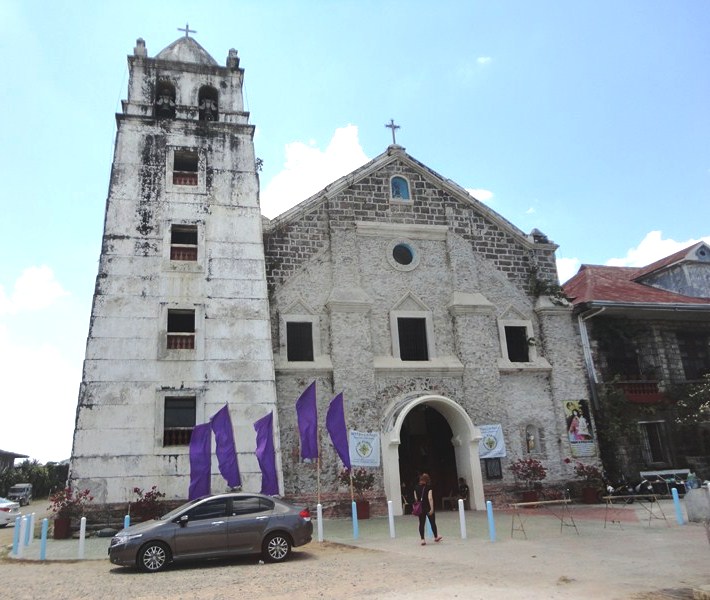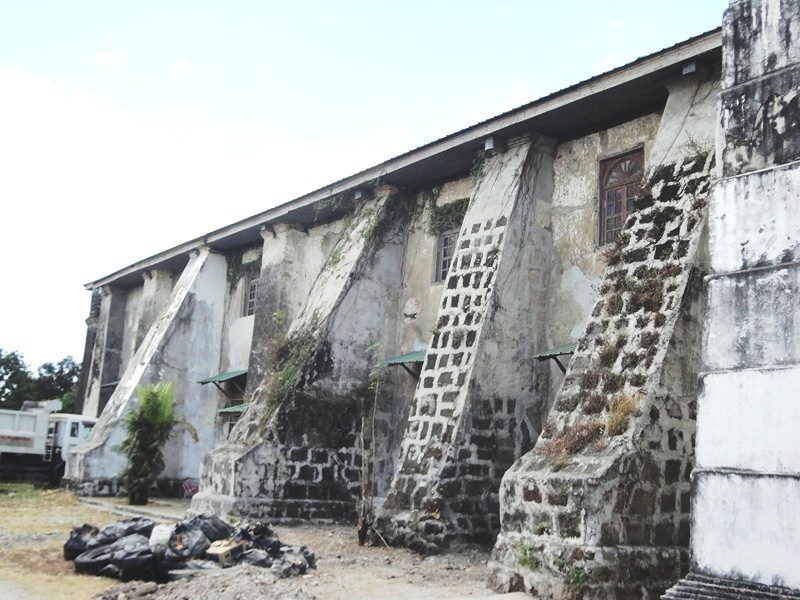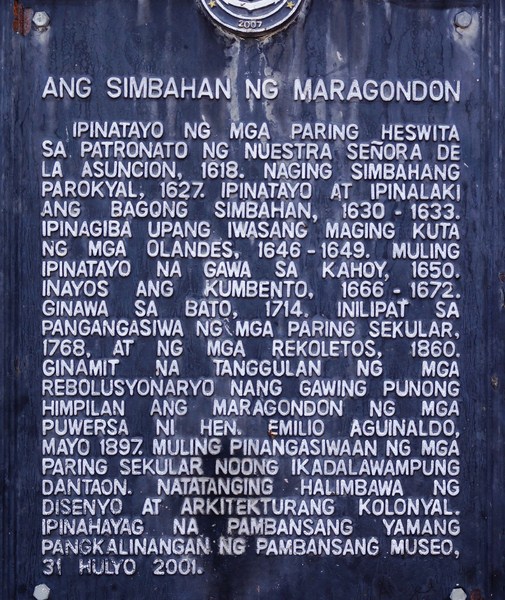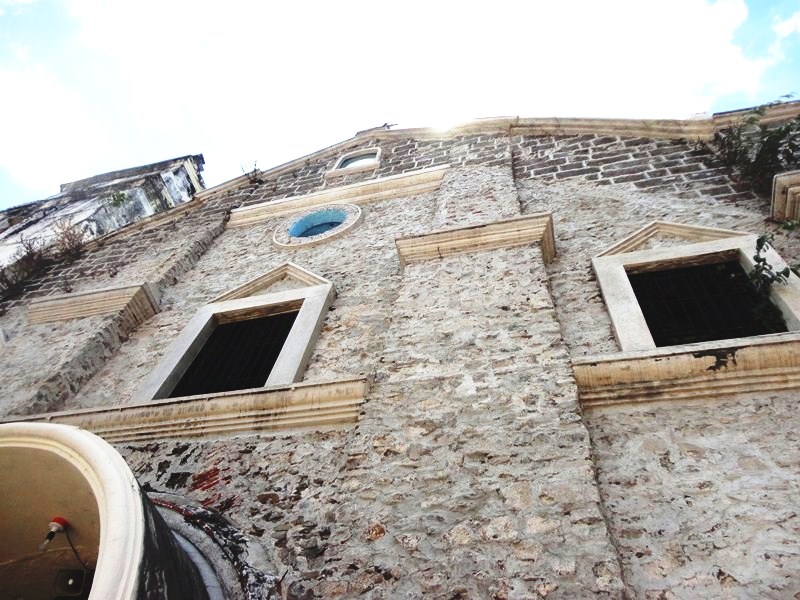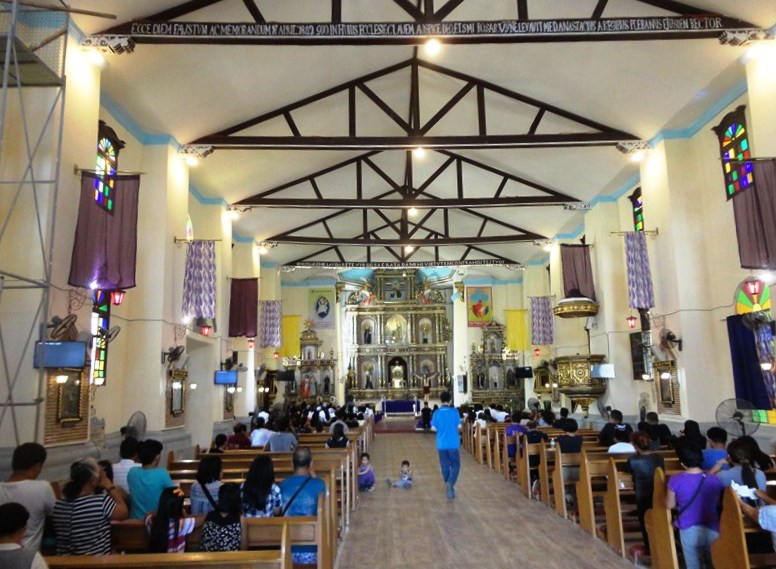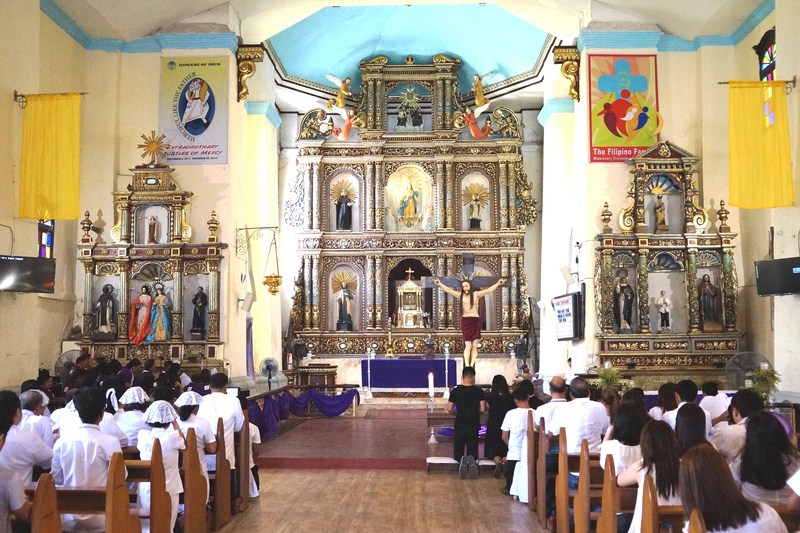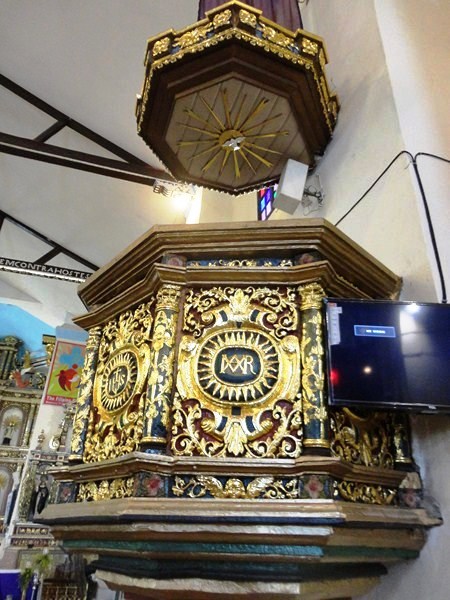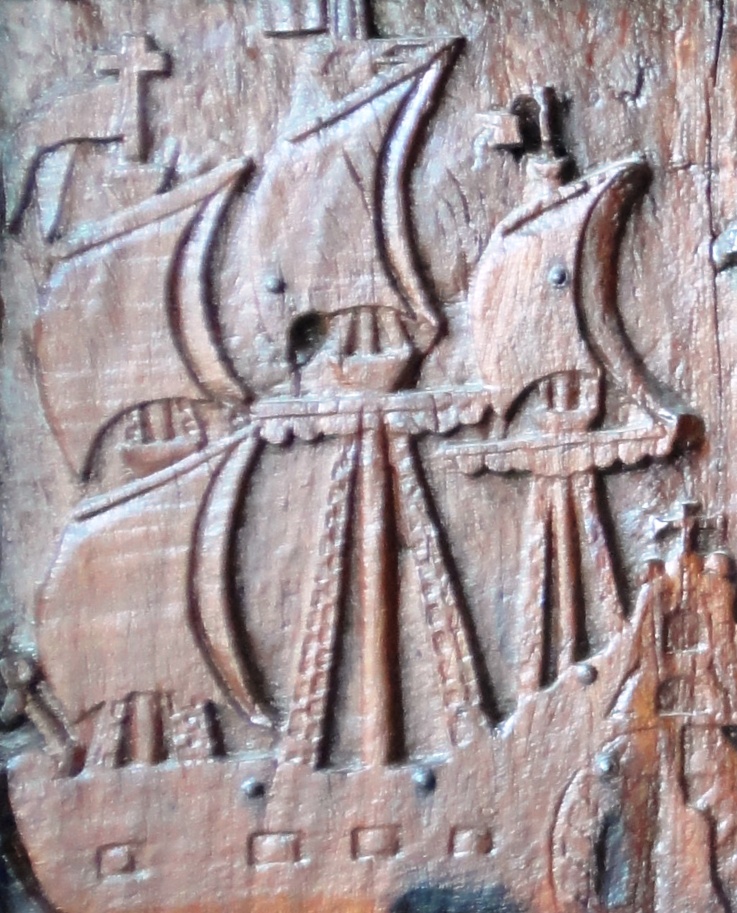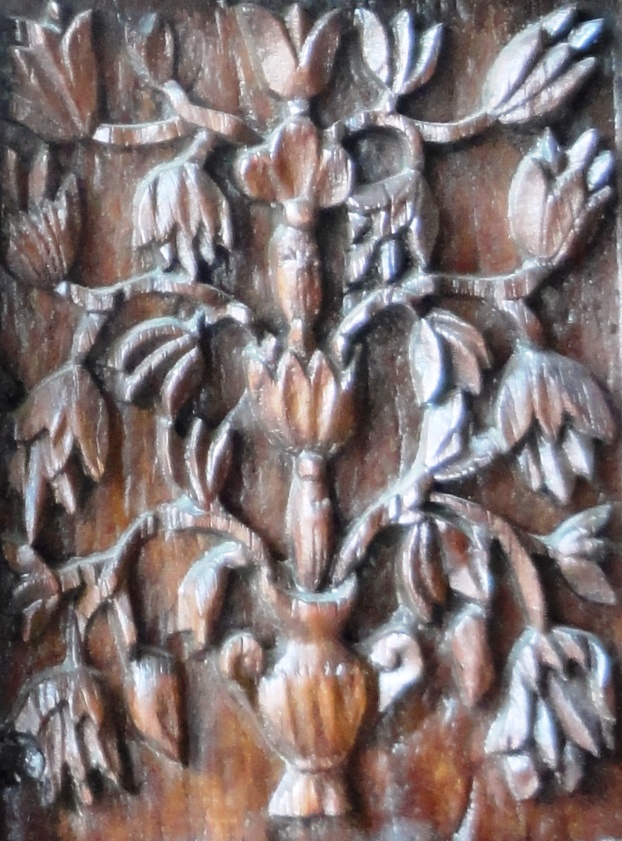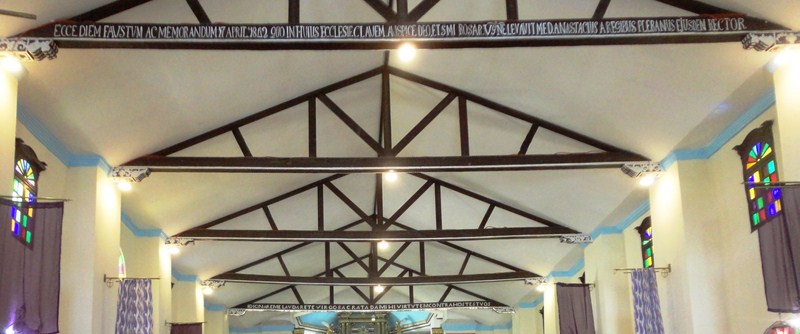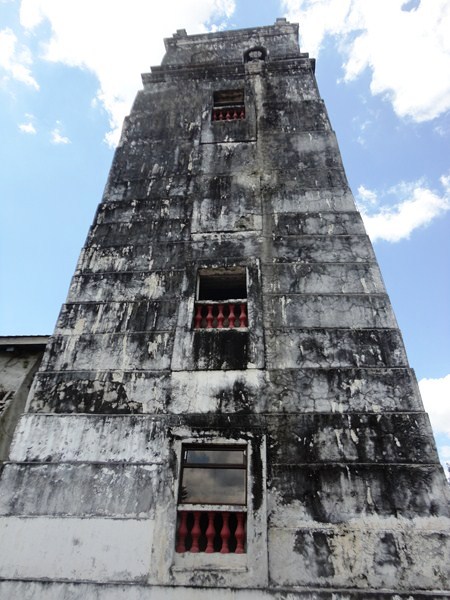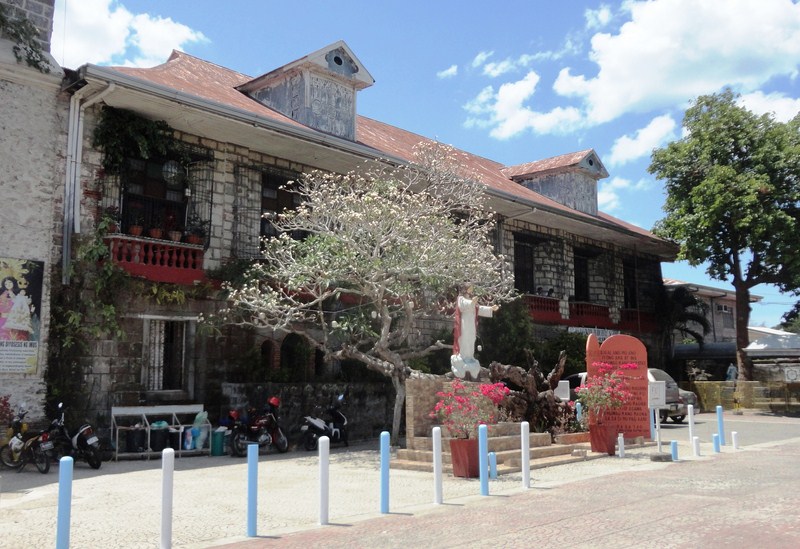From Naic, it was a somewhat long 10.6 km. drive, via Indang Rd. and Governor’s Drive, to Maragondon’s Church of the Assumption of Our Lady. The best preserved church complex in the province, this church was first built in 1618 by the Jesuits, established as a parish church in 1627 and enlarged from 1630-1633. In 1649, during the Spanish-Dutch War, the church was destroyed for fear of becoming a Dutch fort.
Check out “VIsita Iglesia 2017“
In 1650, the church was rebuilt by the Jesuits using wood. The renovation of the church, from wood to stone, was completed in 1714. On June 30, 2001, the church was listed by the National Museum as a National Cultural Treasure.
Much of the church’s unique, narrow but tall and not squatty façade (chastely ornamented with the pilasters tapering upwards), the lower portion of large convent and the old watchtower were built with irregular river stones from the Maragondon River (Pinagsanhan area), an indication of the early level of technology at that time, and layered with stucco.
The church’s ornate interior has intricately-carved, brightly polychromed retablos. The main retablo is decorated with salomonica columns, foliage and angels with trumpets.
It has an image of the Assumption of Mary in the main niche flanked by images of San Luis Gonzaga (Saint Aloysius Gonzaga) and a balding and somewhat rotund San Ignacio. The side retablos have lost their original statuary, with newer ones replacing those that had been lost.
At the right side of the nave is a octagonal pulpit, also polychromed in red, blue, gold and green, with monograms of the names of Jesus and Mary decorating the panels whose borders are flanked by Salomonica columns. The bottom of the pulpit is decorated with swirling foliage that ends up in an inverted pineapple. Augustinian Recollects installed the unusual horseshoe-shaped communion rail with inlaid wood flooring of various colors.
The ornate, antique door, leading from sanctuary to sacristy, is divided into boxes and has intricately carved galleons, castle turrets and sinuous flora of different shapes.
The huge, exposed main roof beams that crosses the nave, added by Secular priests, are emblazoned with Biblical and commemorative captions. Over the nave are phrases in praise of Mary while those above the choir refer to singing as praise.
The quadrilateral, 5-storey bell tower, on the church’s left, has no clear divisions between the storeys. It tapers upwards, ending with finials at the four corners, and is topped by a rounded roof.
Near the church’s main entrance is a cross, dated 1712. The convent, built from 1666-1672, was where Andres Bonifacio and his brother Procopio were imprisoned prior to their execution. Bonifacio’s cell is now a pre-school classroom. The older part of the convent, with its elegant staircase of stone and tile, is made of rubble while the newer part is cut stone brick. A newer sacristy was added. The quadrangle formed by the church and convent is surrounded by the remains of an old defensive wall and a blockhouse.
Church of the Assumption of Our Lady: Brgy. Poblacion 1-A, Maragonon, Cavite. Tel: (046) 412-0784. Feast o the Assumption of Our Lady: August 14-15.
How to Get There: Maragondon is located 54 kms. from Manila and 25 kms. (a 40-min. drive) from Trece Martires City

